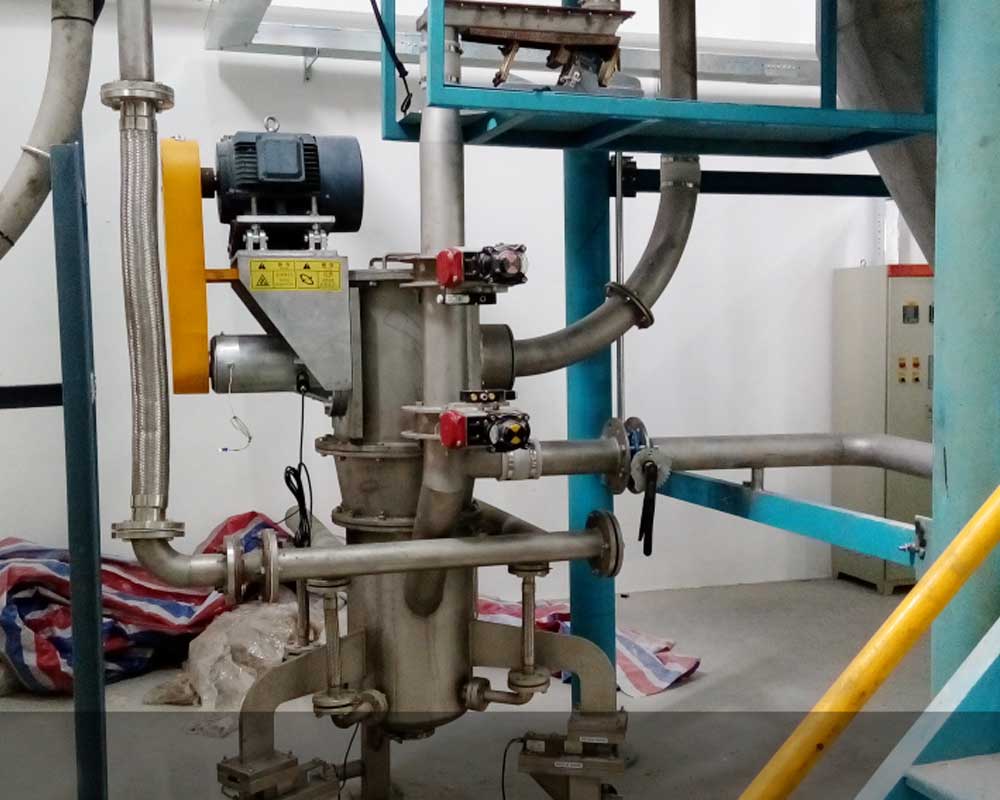Jet mill can accurately control the particle size of ternary materials
One of the important quality indicators of ternary materials is particle size and particle size distribution. Particle size and particle size distribution will affect the specific surface area, tap density, compaction density, processing performance and point chemical properties of the ternary material. Ternary materials used in lithium-ion batteries need to strictly control the particle size and particle size distribution. In the processing of ternary materials, jet mills are usually used for pulverization.
The ternary material jet pulverizer uses high-speed airflow as the power and carrier, and the airflow bundle formed by compressed air is transformed into velocity energy through the nozzle in the pulverizing chamber. The specific performance is: after the compressed air is frozen, filtered, and dried, it forms a supersonic airflow through the nozzles and is injected into the crushing chamber to fluidize the material. The accelerated material merges at the intersection of the jet airflows of several nozzles, resulting in violent Collision, friction, shearing to achieve ultra-fine crushing of particles. The crushed material is transported to the impeller classification area by the rising airflow. Under the action of the centrifugal force of the classification wheel and the suction force of the fan, the coarse and fine powder are separated. The coarse powder returns to the crushing chamber according to its own gravity and continues to be crushed. The airflow enters the cyclone collector, the fine dust is collected by the bag filter, and the purified gas is discharged by the induced draft fan.

The ternary material jet mill is based on the design of the traditional fluidized bed mill and combined with the self-splitting classification technology, so that its performance is far superior to the traditional fluidized bed jet mill. Its main advantages are:
1. Low energy consumption, compared with the traditional fluidized bed jet mill, it can save energy by 30%.
2. Built-in self-distributing micro-powder classifier, the particle size distribution is concentrated, and there is no excessively large particles in the finished product.
3. The equipment has a compact structure and a small footprint.
4. There is no stock in the crushing box, no dead corners, easy to disassemble, wash, disinfect, easy to change varieties, and meet GMP requirements.
5. Low-temperature pulverization without medium, especially suitable for pulverization of low melting point, heat sensitive, sugar-containing and volatile materials.
6. For flammable and explosive materials, inert gas can be used as the medium to realize fully enclosed crushing. The inert gas is recycled and the loss is extremely low.
7. The crushing particle size range is wide, and the particle size of the finished product can be adjusted in the range of 3~180μm; the model is full, and the output of 5~3000kg/h is optional.
8. Negative pressure production, no dust pollution, and excellent environment.
9. High degree of automation, strong stability and easy operation.
In addition to ternary materials, jet mills can also be used in chemical, mining, abrasives, refractory materials, battery materials, metallurgy, building materials, pharmaceuticals, ceramics, food, pesticides, feed, new materials, environmental protection and other industries and various dry powders Superfine crushing, breaking and particle shaping of similar materials.
